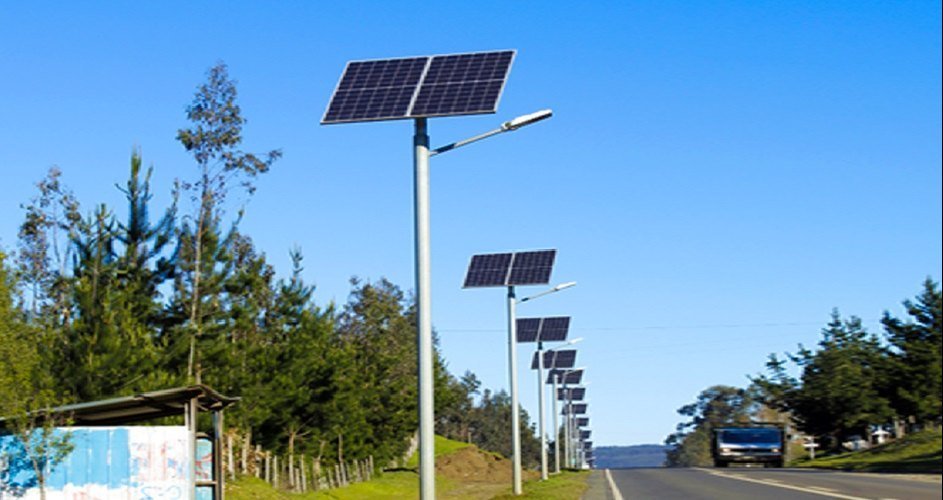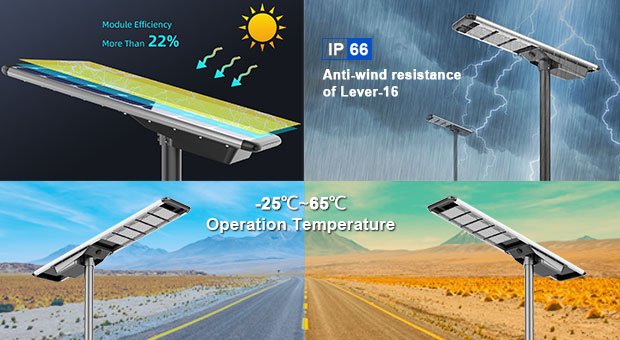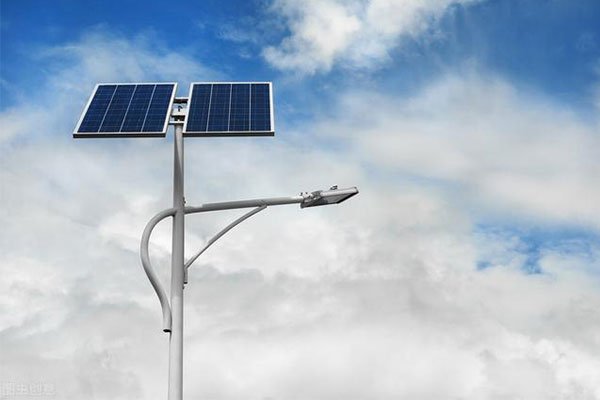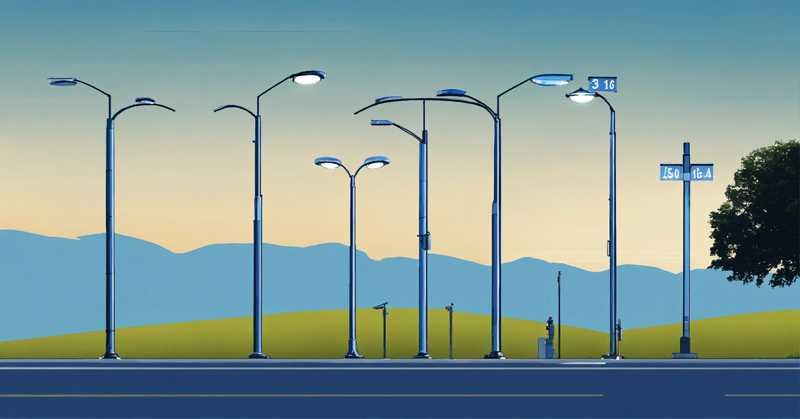Solar street lights are gaining popularity due to their energy efficiency, cost savings, and environmental benefits. However, misconceptions about their performance, reliability, and cost-effectiveness still exist. In this article, we will debunk five common myths about solar street lights and provide the facts to help you make informed decisions.
Myth 1: Solar Street Lights Don't Work on Cloudy or Rainy Days
The Concern
Many people believe that solar street lights only function under direct sunlight and will stop working on cloudy or rainy days.
The Truth
Solar street lights are designed to operate even in low sunlight conditions.
- High-quality solar panels can generate energy even on overcast days.
- Battery storage systems store excess energy from sunny days, allowing lights to function for multiple days without sunlight.
- MPPT (Maximum Power Point Tracking) technology optimizes energy conversion efficiency under varying weather conditions.
Key Takeaway
Modern solar street lights are engineered with advanced batteries and efficient solar panels, ensuring reliable operation even in less-than-ideal weather conditions.
Myth 2: Solar Street Lights Are Not as Bright as Traditional Street Lights

The Concern
Some people assume that solar street lights cannot produce the same brightness level as grid-powered lights.
The Truth
Solar street lights can be just as bright, if not brighter, than traditional lights.
- High-lumen LED technology allows solar street lights to achieve brightness levels equivalent to conventional street lamps.
- Adjustable brightness settings optimize power consumption without compromising visibility.
- Intelligent control systems such as motion sensors adjust brightness based on traffic and pedestrian activity, ensuring efficient use of stored energy.
Key Takeaway
With advancements in LED and battery technology, solar street lights now provide the same level of illumination as conventional lighting systems.
Myth 3: Solar Street Lights Are Too Expensive
The Concern
Many assume that solar street lights are costly and require a large initial investment.
The Truth
While the initial cost of solar street lights may be higher than traditional lights, they offer significant long-term savings.
- No electricity bills – Solar street lights operate independently from the grid, eliminating energy costs.
- Minimal maintenance costs – LED technology and lithium battery storage reduce the need for frequent replacements.
- Government incentives and subsidies – Many regions offer financial support to encourage the adoption of solar lighting.
- Lower installation costs – No trenching or underground wiring is required, reducing labor and material expenses.
| Expense Type | Traditional Street Lights | Solar Street Lights |
|---|---|---|
| Energy Costs | High (continuous bills) | $0 (self-sustaining) |
| Maintenance | Frequent (bulb & wiring replacements) | Low (long-life LEDs & batteries) |
| Installation | Requires trenching & wiring | Standalone setup (lower cost) |
Key Takeaway
Despite a higher upfront cost, solar street lights offer long-term financial benefits, making them a cost-effective solution over time.
Myth 4: Solar Street Lights Require Constant Maintenance

The Concern
People believe that solar street lights need frequent maintenance and battery replacements.
The Truth
Solar street lights are designed for low maintenance and long-term durability.
- LED bulbs last over 50,000 hours, reducing the need for replacements.
- Lithium-ion and LiFePO4 batteries can last 5-8 years with minimal upkeep.
- Dust and waterproof designs protect solar panels and electronic components from environmental damage.
- Smart monitoring systems in advanced models allow remote diagnostics and automatic fault detection.
Key Takeaway
Solar street lights are built to be durable and require minimal maintenance, making them a hassle-free lighting solution.
Myth 5: Solar Street Lights Cannot Operate in Cold or Snowy Climates
The Concern
Many believe that solar-powered lights won’t function properly in cold temperatures or snowy environments.
The Truth
Solar street lights are designed to withstand extreme weather conditions, including cold and snow.
- High-efficiency monocrystalline solar panels continue generating power even in winter months.
- LiFePO4 batteries perform well in sub-zero temperatures, ensuring consistent energy storage.
- Tilted panel designs prevent snow accumulation, allowing proper sunlight absorption.
- Automatic heating systems in advanced models prevent battery freezing.
Key Takeaway
Solar street lights are engineered to perform in various climates, including harsh winter conditions, making them a reliable solution worldwide.
Conclusion

Solar street lights are a powerful, cost-effective, and eco-friendly alternative to traditional lighting systems.
Key takeaways:
- They work in all weather conditions, including cloudy and snowy days.
- Their brightness matches or exceeds conventional street lights.
- They save money in the long run by eliminating electricity bills and reducing maintenance costs.
- Modern solar street lights are durable, requiring minimal upkeep.
- They are a viable solution even in cold climates.
By debunking these myths, it's clear that solar street lighting is an efficient and practical choice for urban and rural infrastructure. With continuous advancements in technology, they are becoming an even more attractive solution for sustainable and smart cities.







